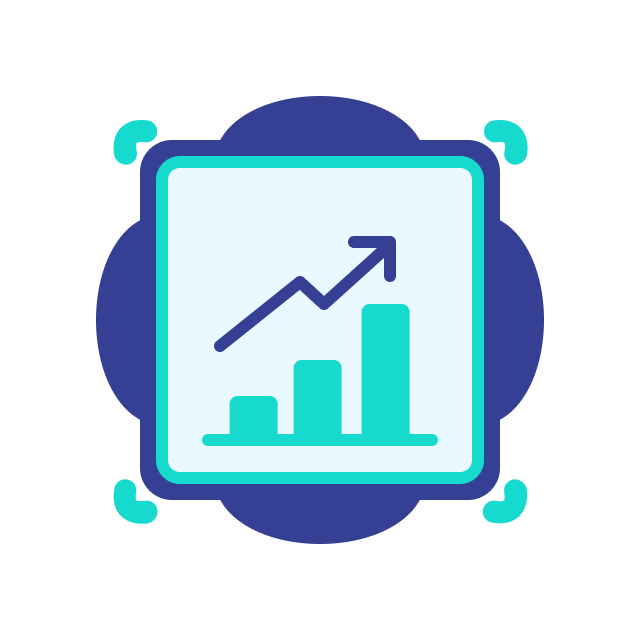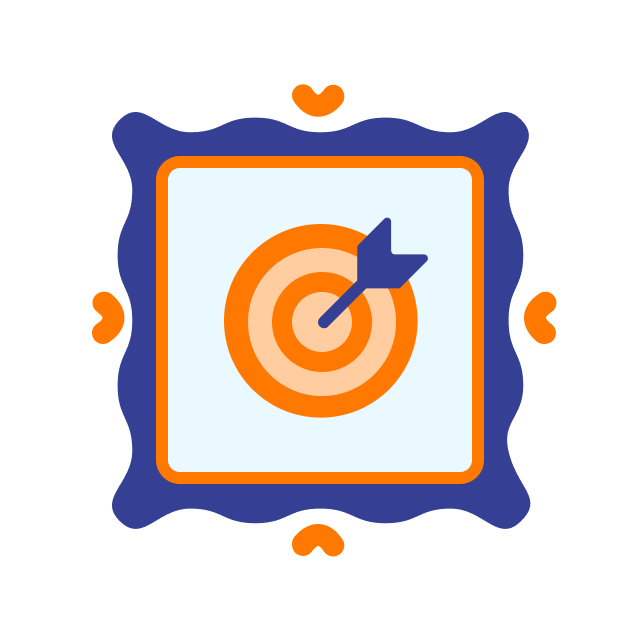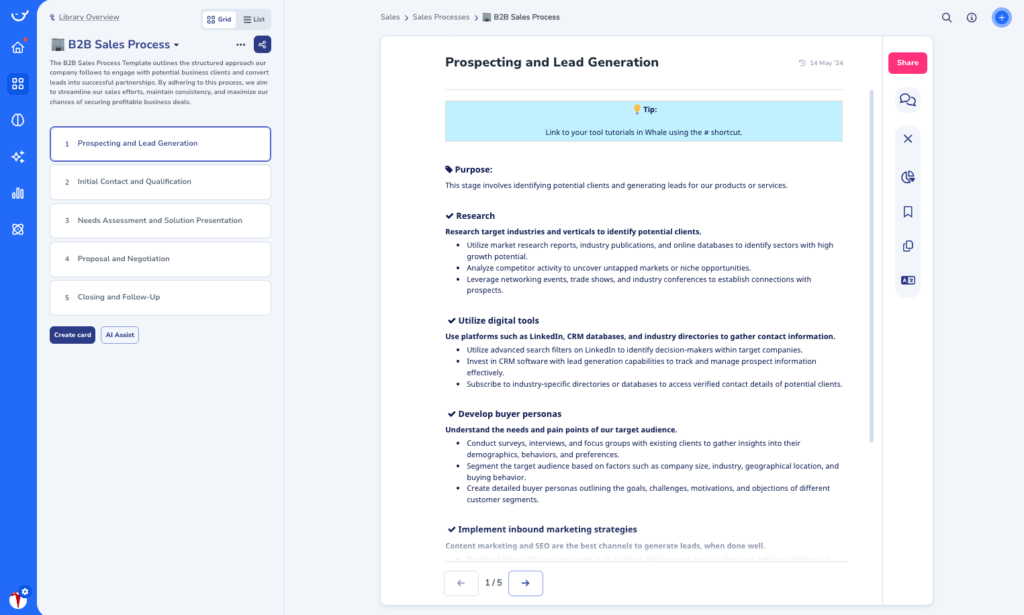
Click image for HQ version
This B2B Sales Process Template: Unlocking Growth for Scaling Businesses will walk you through the essentials of a B2B sales process, demonstrating how a structured approach can drive your business forward.
By optimizing your sales strategy, you can not only increase efficiency but also enhance customer satisfaction and improve your bottom line.
Read on as we share the ultimate playbook for growth.
Understanding the B2B sales process
A B2B sales process is a set sequence of steps that your sales team follows to convert a prospective lead into a customer. It’s the backbone of your sales activities, providing a systemized approach to selling that can be measured, optimized, and replicated.
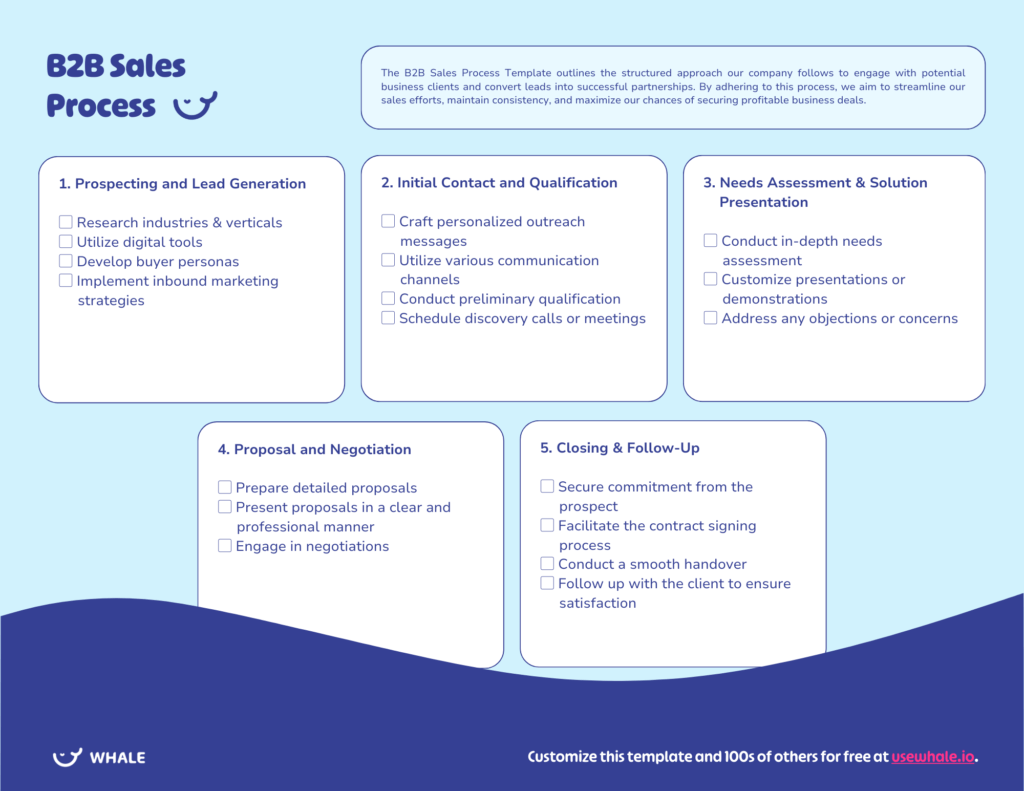
The importance of building a sales process in B2B
Selling B2B (Business to BusinesS) isn’t like selling B2C (Business to Customer) because you can’t be listed on Amazon and you don’t have a store.
Developing a structured sales process is crucial for several reasons:
- Predictability: Standardized steps provide your sales team with a clear roadmap, leading to predictable results.
- Efficiency: A well-defined process minimizes time wasted on ineffective strategies and focuses efforts on what really works.
- Scalability: Standard procedures are easier to teach and can be scaled up, supporting your business growth without a corresponding increase in resources.
Ravi Abuvala on 7 Massively Effective B2B Sales Tips
Use our templates to fast-track your documentation
Customize this template and 100s of others for free in Whale, the fastest way to get your team aligned.
Benefits of using a sales process template
There’s one super obvious benefit to having a structured sales process and that is…
well, more sales of course! It’s all about reaching those key growth metrics in your business after all.
But there are a few other benefits you may not have considered.
A structured sales process offers numerous advantages:
- Increased conversion rates: Clearly defined steps enhance the effectiveness of your sales efforts, increasing the likelihood of conversion.
- Improved customer experience: A predictable and smooth sales process improves customer interactions and satisfaction.
- Enhanced data collection: Systematic processes make tracking and analyzing data easier, providing insights to further refine sales strategies.
Steps in the B2B sales process
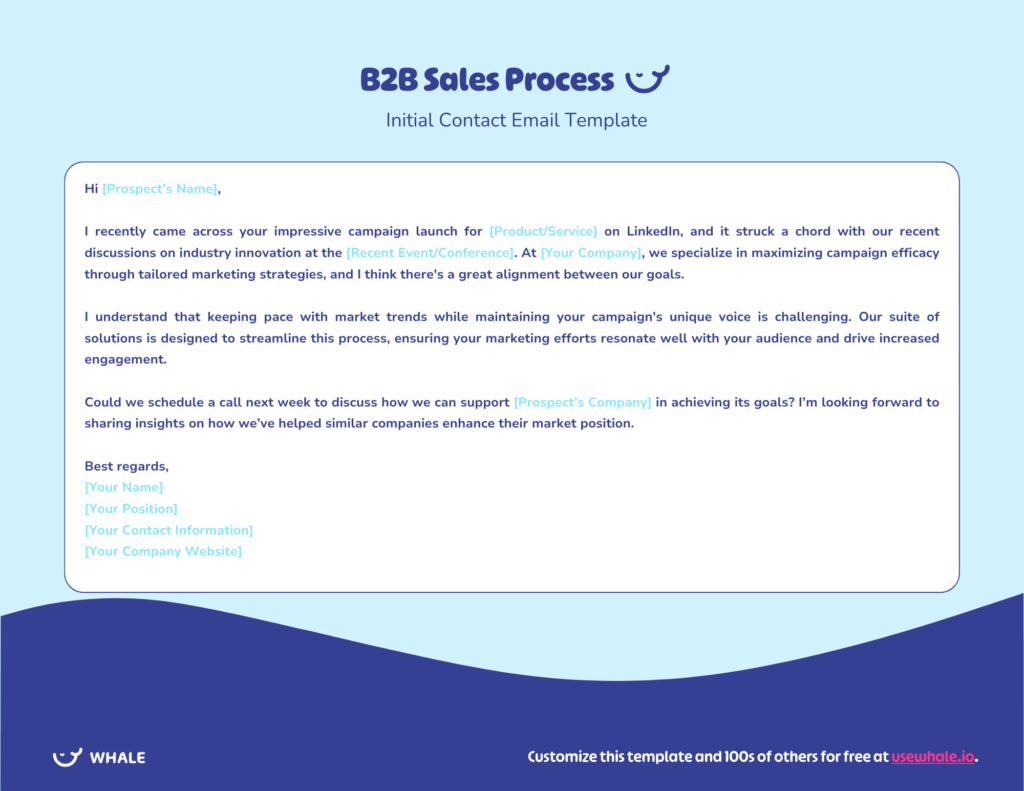
The B2B sales process typically involves several key stages:
Prospecting
This step involves identifying potential customers who might benefit from your product or service.
For this you might use a wealth of tools including sales prospecting tools, social media or general internet research to find the perfect potential customer.
PS Continuously learn and adapt:
Monitor the effectiveness of your prospecting efforts by tracking metrics such as response rates, conversions, and closed deals. Stay updated with industry trends and customer needs to refine your prospecting strategies.
Connecting
Here it’s all about initiating contact with potential leads to assess their interest and needs.
Personalize your outreach
Craft personalized and tailored messages when reaching out to prospects. Avoid generic templates and show that you have done your research. Personalization helps you stand out and demonstrates that you understand the prospect’s specific needs and challenges.
Utilize multiple communication channels
Leverage a multi-channel approach to reach prospects through various mediums such as email, phone calls, social media, and networking events. Each channel serves a different purpose and allows you to connect with prospects in a way that suits their preferences and habits.
Qualifying
Determine whether a prospect is a good fit for your product based on specific criteria.
Ask effective qualifying questions:
Ask targeted and open-ended questions to gather relevant information from leads. Qualifying questions should address factors like their goals, timeline, budget, decision-making process, and any potential objections.
Use a scoring or rating system:
Assign a numerical score or rating to each lead based on predefined criteria, such as demographic data, engagement level, and responses to qualifying questions. This system enables you to prioritize leads and allocate resources effectively.
Collaborate with marketing:
Maintain open communication and collaboration with the marketing team to align on lead qualification criteria and ensure a smooth handoff from marketing to sales. Work together to define lead scoring models, develop lead nurturing strategies, and share insights from lead interactions.
Continuously refine and optimize:
Regularly evaluate and refine your lead qualification process based on feedback, data, and sales outcomes. Monitor the quality of leads generated and the conversion rates at each stage of the sales funnel. Identify areas for improvement and adjust your qualifying questions, scoring system, or criteria as needed to increase the efficiency and effectiveness of lead qualification.
Presenting
It’s time to demonstrate the value of your product or service to the qualified leads.
Prepare thoroughly:
Research their industry, competitors, and any relevant market trends. Customize your presentation to address their specific challenges and demonstrate how your solution can meet their needs.
Focus on the value:
Clearly articulate the benefits and outcomes they can expect from implementing your solution. Show how your solution can address their pain points, increase efficiency, reduce costs, or drive revenue growth. Align the features of your solution with the client’s desired outcomes.
Engage and customize:
Engage the client throughout the presentation by asking questions, seeking their input, and customizing the demonstration to their specific use cases. Show them how your solution can solve their unique challenges and meet their specific requirements. Tailor your language, examples, and visuals to resonate with their industry and business context.
Use visuals and stories:
Utilize visuals, such as slides, videos, or product demos, to enhance the presentation and make it more engaging. Incorporate storytelling techniques to illustrate how your solution has successfully addressed similar challenges for other clients. Use customer success stories or testimonials to provide concrete examples of the value your solution can deliver.
Handling objections
Addressing any concerns or reservations that a prospect might have is crucial.
For the involved process, check out our objection handling template.
(Always Be) Closing
It’s time to finalize the sale by ensuring all parties are satisfied with the terms.
Here are some helpful tips to always be closing.
Maintain open communication:
Keep communication channels open and respond promptly to any inquiries or requests from the potential client. Address any concerns or objections they may have and provide clear and concise information to help them make an informed decision.
Clarify the decision-making process:
Understand the decision-making process within the potential client’s organization. Identify key stakeholders and decision-makers involved in the buying process. Clarify their roles, responsibilities, and timelines.
Provide clear next steps:
Clearly outline the next steps and the process for finalizing the deal. Provide a detailed roadmap that outlines the timeline, deliverables, and any necessary actions from both parties. Ensure that the potential client understands what is expected of them and what they can expect from your organization.
PS Always align sales stages with the customer journey
Each stage of the B2B sales process should align closely with the customer’s journey. This alignment helps ensure that your team interacts with the prospect appropriately at each stage, enhancing the chances of a successful sale.
Tips for avoiding sales process mistakes
- Get customer feedback: Even if a customer doesn’t want to buy your product or service, make sure you understand why so you can keep refining your sales process.
- Do not skip stages: Ensure each step is completed before moving to the next.
- Stay adaptable: Be ready to tweak your approach based on feedback and market changes.
- Consistent training: Regularly train your sales team to keep them updated on the best practices.
Essential elements of a B2B sales process template
A comprehensive B2B sales process should include:
- Detailed steps and actions: Clearly describe what needs to be done at each stage.
- Responsibilities: Define who is responsible for each step.
- Timeline: Specify how long each stage should take.
- Tools and resources: List the tools and resources needed to execute each step.
- Performance metrics: Identify how success will be measured at each stage.
FAQs on using a customer success story
What is the best way to handle objections?
Handling objections effectively involves active listening, empathizing with the customer’s concerns, and addressing them directly and positively.
Check out our objection handling template to chart your plan.
What is an example of a B2B sales funnel?
The traditional B2B sales funnel is broken down into 4 stages: Awareness, Interest, Decision, and Action. Although you can add loyalty and retention as additional steps in the funnel.
We do this at Whale because it’s not just about getting a client but making sure they have the best experience.
How can I improve my sales team’s performance?
Regular training, clear performance metrics, and consistent feedback are key strategies for improving a sales team’s performance.
How can I close more B2B deals?
The best way to close more deals is to make sure you understand your customers and potential customers. Know their pain and solve their problems and you’ll close more deals.
Sales isn’t so much about selling as it is about really adding value to customer’s lives – so much so that they feel they simply can’t live without your product.
Should the sales process be the same for all customers?
While the core stages of the sales process generally remain the same, it’s important to tailor your approach based on the specific needs and behaviors of different customer segments.
Also it helps to really tailor calls and presentations for prospective customers and also ups the impression factor!
Do your homework on prospective clients and it’ll pay off!



